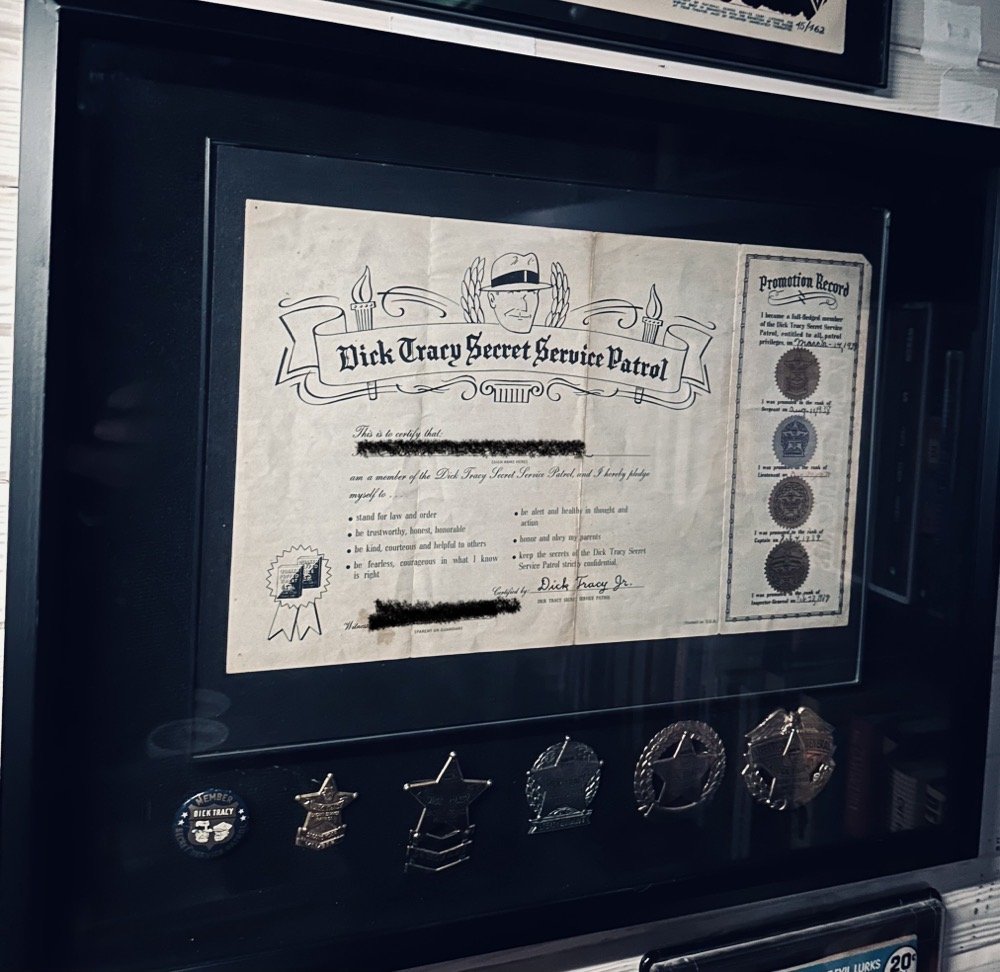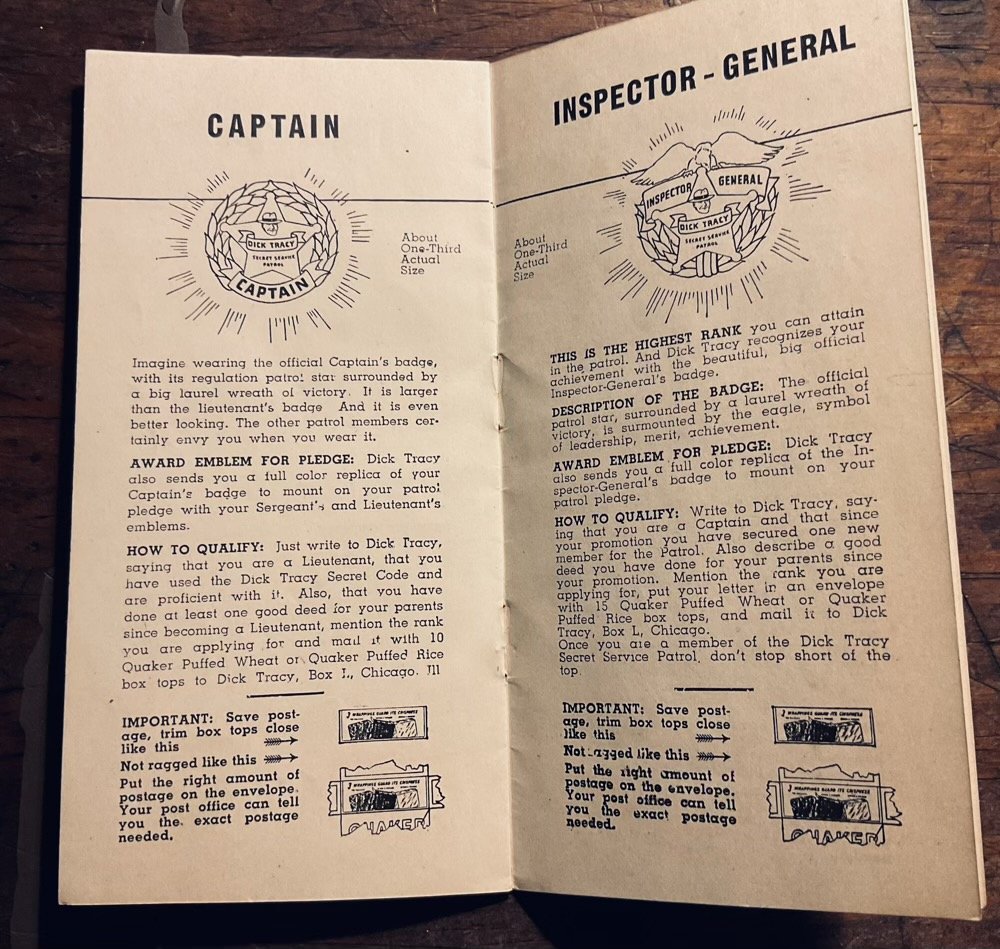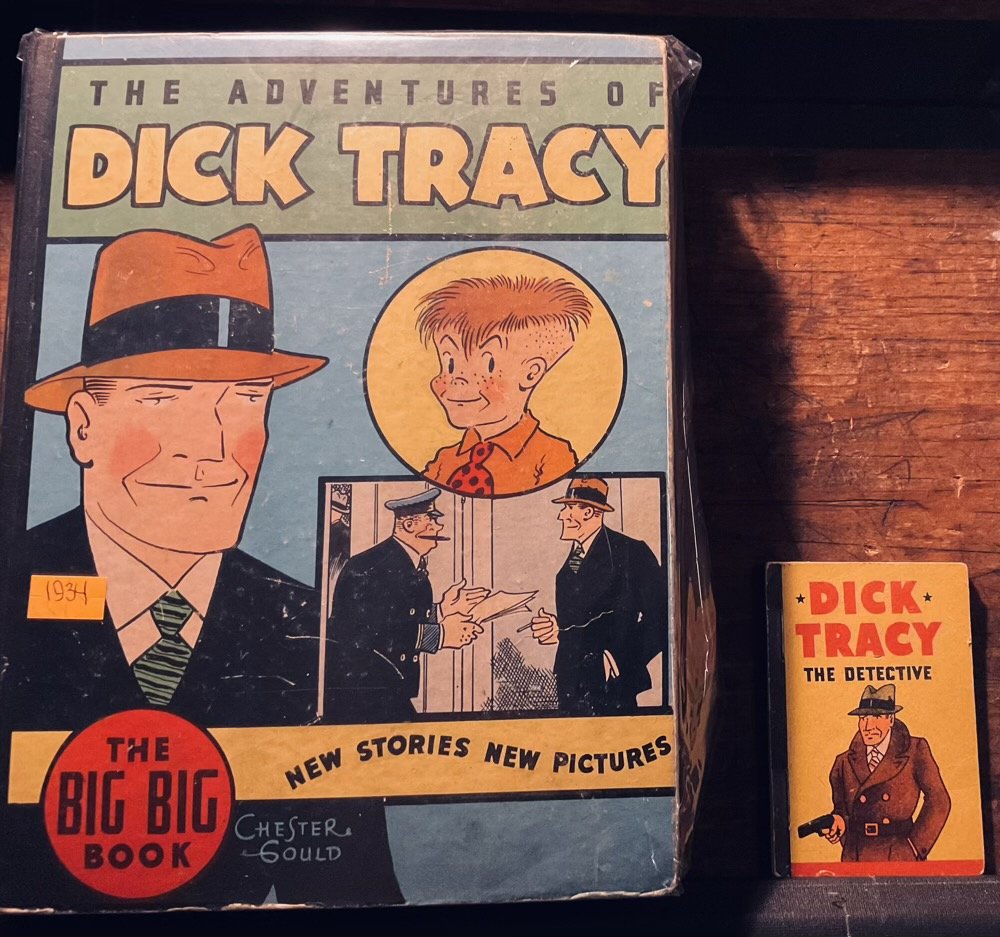As in love as I am with my now-complete (28/27) collection of DICK TRACY Big/Better Little Books, I'm equally fascinated by two other tomes – both, like the Big/Better Little Books, from Whitman (the form of both is comparable to Big Little Books, newspaper strip reprints told via prose on the left, illustration on the right, repeat for x number of pages) that arrived on the same day: 1934's "The Big Big Book," THE ADVENTURES OF DICK TRACY – essentially a hardback phonebook version of a Big Little Book requring a vinyl album cover to protect– and 1938's DICK TRACY, THE DETECTIVE, a 32-page stapled mini the size of two matchbooks, a Penny Book, that fits in the palm of my rather small adult hands and is perfectly at home in a baseball card plastic sleeve (that took me forever to unearth in the boxes and boxes of collections from my formative years), delivery system bookends to a decade of experimentation:
















